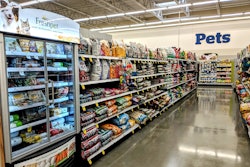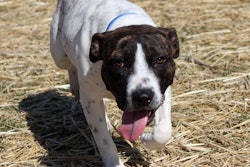
Multi-year supply constraints made advertising certain pet foods pointless for Nestle Purina PetCare since they didn’t have any to sell at times, Francois Xavier Roger, chief financial officer for Nestle during the company’s presentation at Barclays Consumer Staples Conference on Sept. 6. Nevertheless, although inflation and other factors challenged some brands, Purina PetCare grew its North American sales volume during the past few years.
While supply chain problems and inflation have been ongoing issues for the pet food industry, the future may hold other obstacles. Warren Ackerman, Barclays’ head of European consumer staples research, noted that other pet food companies had expressed rising concerns related to pet owners trading down to less expensive products, as well as changes to pet adoption rates. He asked if Purina brands had experienced similar difficulties.
“For us in pet it was by far the most resilient category as we move through all the pricing and all the supply,” Steven Presley, chief executive officer for Nestle’s North America zone said at the Conference. “We've been incredibly supply-constrained in that business for the last three years. We're building capacity. Some of it's online now. The new factory comes online at end of this year. Another one will come online in '24. And so, we still have supply runway to actually catch up on. But when you look at the category, we're a bit unique, and it's actually true across most of our categories in North America, is we actually try to play across all of the stratas in the category.”
Purina PetCare positioned for pet owners to trade down
Presley compared pet food to coffee. Nestle has coffee products at all levels of the price spectrum. When consumers trade down, they often end up buying another Nestle coffee brand. Likewise with pet food, when pet owners choose a less expensive product, they can find an offering within the Purina family of brands.
“We see some of that, but we still see premium actually growing,” he said. “Our Pro Plan, Purina ONE and Fancy Feast are actually doing very well and growing in the premium end of that segment. And so for us, we're a little more bullish. If you look at pet population, it's basically averaged 1% growth for the last three years. It might go down slightly.
"The good news is it's a little more dog-weighted right now, but it's not so much that it's dog weighted, it's that it's big-dog weighted. So we've all decided that we don't want little dogs anymore. We're going to go with big Labs or Swiss Mountain dogs which is good, they eat more food. And so we like that. We like the big dog approach. So you see some of that actually coming into the marketplace that will actually help drive that as well.
“But we're a little more bullish overall on the ability to grow that category. It will obviously come down,” Presley said. “Like all categories, it has to come down off of the spikes that it's been through the last 24 months. But I think it will still be a very high single-digit category that will continue to drive growth through premiumization across the category. The fundamental consumer trend of humanization and bringing that pet member into the family gets stronger and stronger over time.”


















